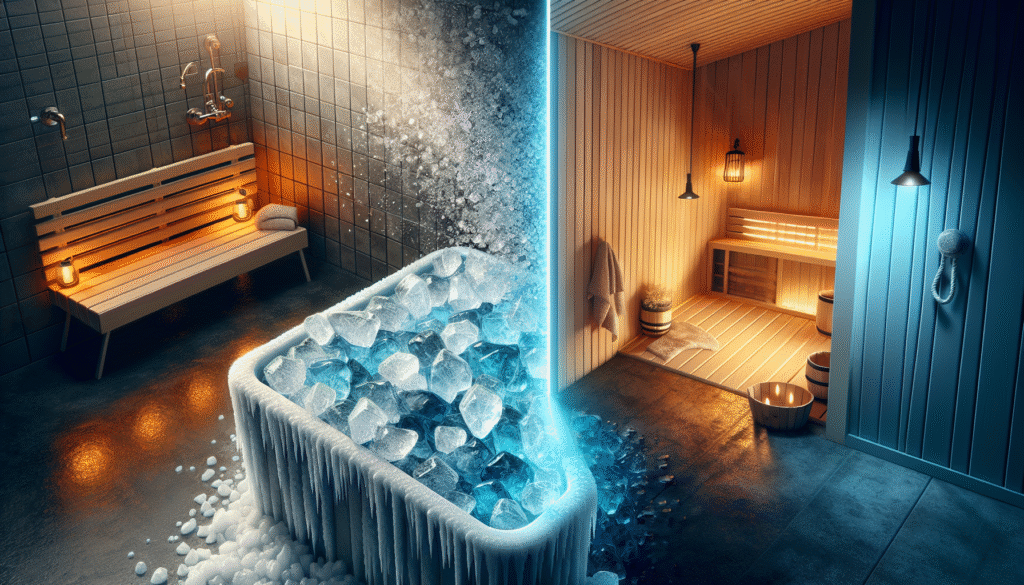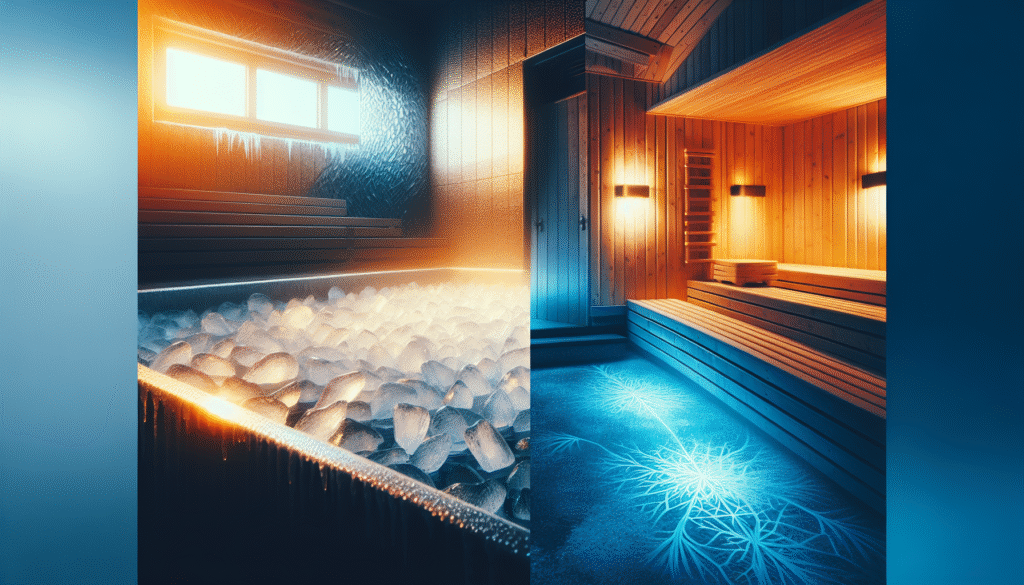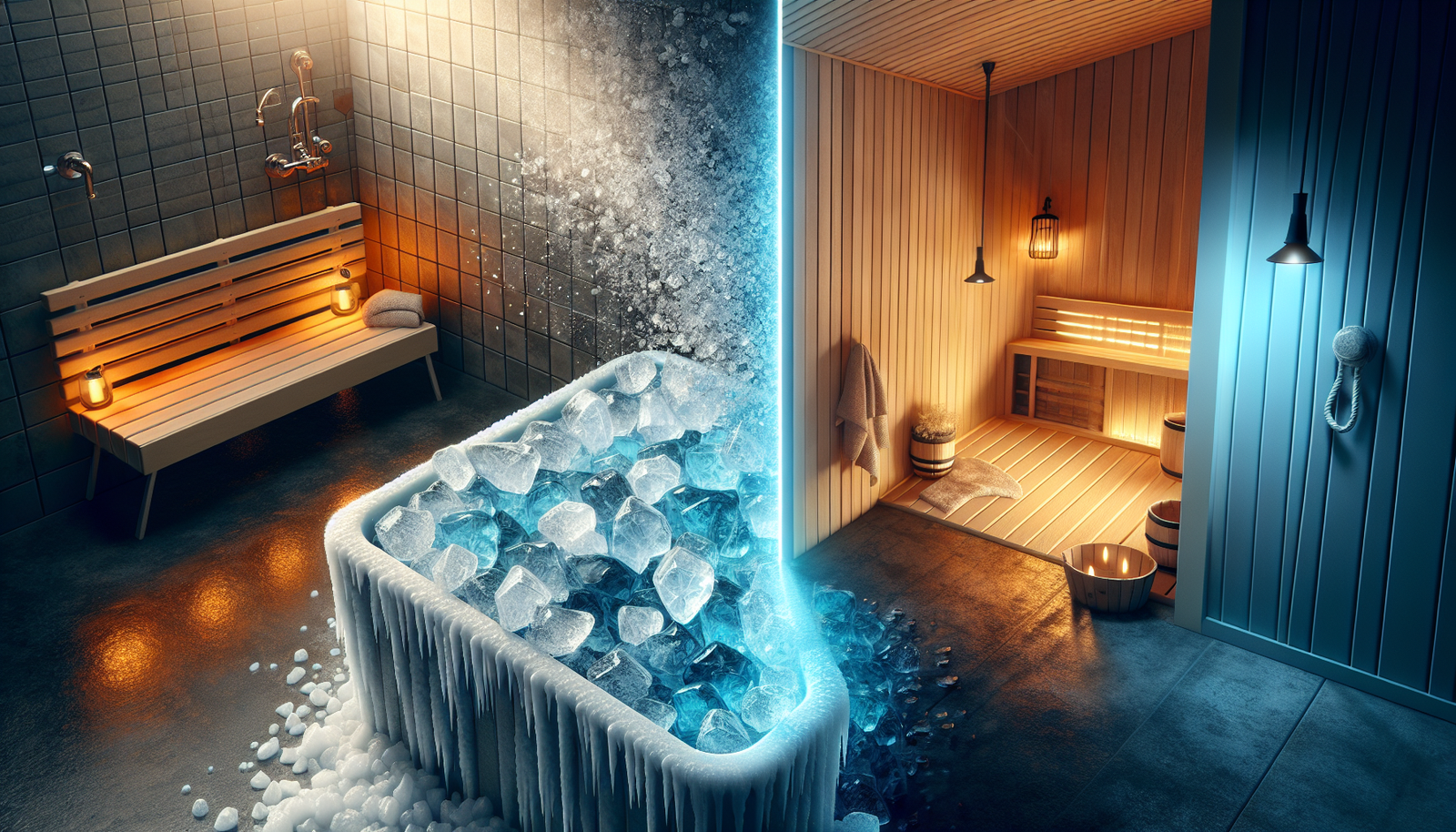Have you ever considered how a steaming sauna session stacks up against a brisk dip in icy waters? You might be surprised at the array of health benefits that both practices offer. In a world that’s constantly on the move, many individuals are looking for ways to enhance their wellness routine. cold plunging and sauna use are two invigorating methods that entice health enthusiasts, but how do they really compare?

What is Cold Plunging?
Cold plunging refers to immersing your body in cold water, typically at temperatures around 50-60°F (10-15°C). It can be done in natural bodies of water, ice baths, or specialized tubs designed for this purpose. People often engage in cold plunging after workouts to promote recovery, but it has a range of benefits that can extend beyond just athletic performance.
The Experience of Cold Plunging
When you first step into cold water, your body reacts instinctively. Your heart rate increases, blood vessels constrict, and you might even feel a rush of adrenaline. This shocking experience is not just for frigid thrill-seekers; it can elicit significant physiological benefits.
What is Sauna Use?
On the flip side, a sauna is a heated room designed to induce sweating through high temperatures, generally ranging from 150°F to 195°F (65°C to 90°C). Saunas come in different types—traditional steam saunas, infrared saunas, and even smoke saunas, which contribute unique benefits.
The Experience of Using a Sauna
Stepping into a sauna feels like wrapping yourself in a warm, comforting blanket. As you settle in, you can feel the warmth enveloping you, coaxing your muscles into relaxation. This experience is not only soothing but can also trigger various health benefits as your body heats up.
Health Benefits of Cold Plunging
Cold plunging has gained popularity, especially among athletes and health enthusiasts, for its many claimed benefits.
Boosts Immunity
Research suggests that exposure to cold can improve your immune system by increasing the number of white blood cells in your body. These cells help fight off infections, improving your overall health.
Increases Circulation
Cold plunging encourages blood to circulate more effectively. When your body is cold, blood vessels constrict, then dilate once you warm up, effectively getting your blood moving. This increase in circulation can enhance nutrient delivery to muscles and aid in recovery.
Reduces Inflammation
Cold water has been particularly noted for its capacity to reduce inflammation. Many athletes resort to cold plunges to alleviate muscle soreness after strenuous workouts. The cold water helps to numb the pain and reduces swelling, making recovery faster.
Enhances Mood
Jumping into cold water can trigger the release of endorphins, which are your body’s natural mood lifters. The refreshing shock can also create a sense of euphoria, making cold plunging a great mood booster.
Improves Sleep Quality
Regular exposure to cold water can lead to better sleep patterns. The stress of the cold, followed by a warm-up, can promote relaxation and lead to improved rest.
Health Benefits of Sauna Use
Sauna therapy has long been lauded for its extensive health benefits.
Detoxification
One of the most touted benefits of sauna use is detoxification. By sweating profusely, your body can eliminate toxins like heavy metals and other impurities. This isn’t just a beauty treatment; it can be vital for maintaining overall health.
Improves Cardiovascular Health
Regular sauna sessions have been linked with improved cardiovascular health. Increased heart rate during sauna can act like light exercise, improving your circulation and promoting a stronger heart.
Stress Reduction
Saunas provide a tranquil environment that encourages relaxation. The heat can help alleviate tension in your muscles, which often translates to mental relaxation as well, reducing stress levels.
Skin Health Improvement
The heat from a sauna can open up your pores, promoting deeper cleansing. This can improve various skin conditions and promote a healthy, glowing complexion.
Enhances Recovery After Exercise
Similar to cold baths, saunas can also help with recovery post-exercise. The heightened blood flow aids in muscle repair and regeneration, reducing soreness.

Cold Plunging vs. Sauna: Side-by-Side Comparison
To provide you with a clearer understanding, let’s break down the benefits of cold plunging and sauna use in a side-by-side comparison.
| Benefit | Cold Plunging | Sauna |
|---|---|---|
| Boosts Immunity | Yes | Yes |
| Increases Circulation | Yes | Yes |
| Reduces Inflammation | Yes | Somewhat |
| Enhances Mood | Yes | Yes |
| Improves Sleep Quality | Yes | Yes |
| Detoxification | Limited | Yes |
| Improves Cardiovascular Health | Yes (in moderation) | Yes |
| Stress Reduction | Somewhat | Yes |
| Skin Health Improvement | Limited | Yes |
| Enhances Recovery After Exercise | Yes | Yes |
Which is Better for You?
Choosing between cold plunging and sauna use may come down to personal preference and health goals. If you’re looking to reduce inflammation and boost recovery, cold plunging could be your go-to. That refreshing shock can awaken your body and improve immune function.
On the other hand, if you value relaxation and detoxification, a sauna might be the better choice. The soothing environment can provide a mental escape along with physical benefits.
Your Wellness Goals Matter
Consider your wellness goals when deciding which practice to incorporate into your routine. Are you aiming to recover faster after intense workouts? Cold plunging might be more effective. Alternatively, if you seek relaxation and skin health benefits, you may lean more toward the sauna experience.

Combining the Two Practices
What if you don’t have to choose? Many people enjoy the benefits of both cold plunging and sauna use by integrating these practices into their wellness routines.
Contrast Therapy
One effective approach is contrast therapy, where you alternate between cold and hot experiences. You could start with a cold plunge to reduce inflammation, then move to a sauna session to promote relaxation and detoxification. This method can optimize recovery and provide an invigorating experience.
Recommendations
Regardless of which practice you decide to adopt, it’s crucial to pay attention to your body. Start slowly if you’re new to either cold plunging or sauna use. Gradually increase the lengths of your sessions and the temperatures based on your comfort level. Listen to what your body needs and ensure you remain hydrated, particularly during sauna use when you’re sweating profusely.
Safety Precautions
While both practices offer significant benefits, keeping safety in mind is essential.
Cold Plunging Precautions
-
Consult a Doctor: If you have health conditions such as heart issues or high blood pressure, it’s best to consult a healthcare provider before starting cold plunging.
-
Warm Up First: Before diving into cold water, consider doing light exercises to warm up your body.
-
Limit Exposure: Start with short periods in cold water and gradually increase your time as you become accustomed.
-
Listen to Your Body: Pay attention to how you feel; if you start shivering uncontrollably or feel dizzy, it’s time to get out.
Sauna Precautions
-
Hydrate: Drinking plenty of water before and after sauna use will help to prevent dehydration.
-
Limit Time: Sessions should ideally be kept to around 15-20 minutes, especially if you are new to it.
-
Cool Down Gradually: After a sauna session, allow your body to cool down before taking a shower or exposing yourself to cold temperatures.
-
Avoid Alcohol: Consuming alcohol before or during sauna use can lead to dehydration and overheating.

Cultural Perspectives
Both cold plunging and sauna use have deep roots in various cultures. For instance, Nordic countries have embraced sauna culture for centuries. It’s often viewed as a social activity, a place for relaxation, and wellness. On the other hand, cold plunging fits into the traditions of numerous cultures around the world, from the Japanese ice baths to polar bear plunges observed in various places for any number of reasons, including community and mental toughness.
Lessons from Other Cultures
By learning from how other cultures incorporate these practices into their lives, you may enrich your own experience. Consider attending a community sauna night in your area or joining a group for cold plunges. This could not only deepen your understanding of the practices but also build a sense of community and support.
Conclusion
In the end, whether you find more joy and health benefits in cold plunging or sauna sessions depends on your preferences and wellness objectives. The thrill of cold water contrasts beautifully with the calming warmth of the sauna, each offering unique experiences that can greatly enhance your well-being.
So, is it time to dip your toes into icy water or bask in steamy warmth? Whichever path you choose, remember that both practices can significantly contribute to a healthier, happier you. Take time to listen to your body and enjoy the journey toward wellness.


